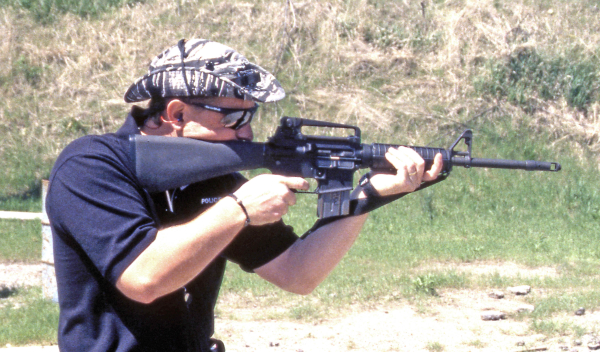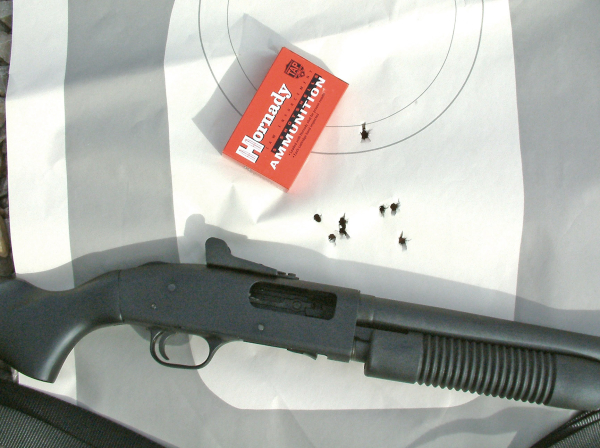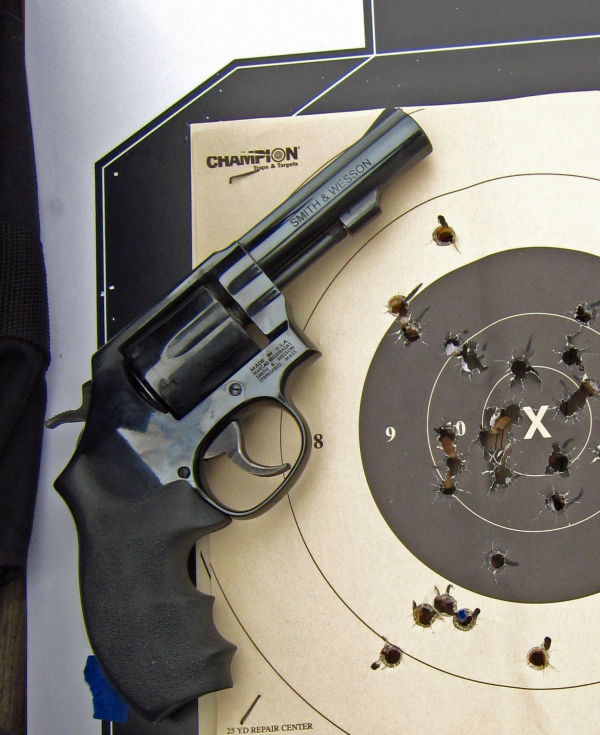I saw a piece on “what’s the best home defense” gun. We see this all the time and, for whatever reason, it inspired me to consider how I arrived at my own answers. It seems that the thing we have to focus on is the resident’s knowledge, skills and abilities. After that, examine likely distances to target, use of light, and – after 1 January, whether or not to use suppressors and short barrel “more than pistol” types of firearms.

The AR15, for example, is a standout choice for ensconced defense; taking a position and holding it. Why does distance matter if you have a rifle?
The rifle, by design, is capable of precision over distance. If it’s room combat you’re in for, distance is overwritten by zero – or more precisely mechanical offset. The top of the sights (or the dot, in an electro-optic) is much higher than the midline of the bore – which is where the projectile travels.
If the violent home intruder enters the bedroom door, it’s not that much a problem (unless another occupant is in front of him). Down the hallway – depending on length – it could be a bit more of a problem if you only see part of him – he’s peering around a corner, for example.
The AR15 is where the ‘can’ would shine; still not hearing safe (particularly indoors), the blast is more manageable with a ‘silencer’ installed. For magazines, I recommend 20-rounders (just like Dave Spaulding does); for me, the longer magazines are a snag hazard if I have to move.
As to ammo, some commentators note that “M855 sucks” – well, maybe. I know someone with experience in the OCONUS environment who notes that “no one hit with it seemed unimpressed.”
The heavier bullet loads? Great for going the distance or for dealing with barriers, I’m not sure that’s a solid home defense issue. Be more concerned with reliability, accuracy (yes, it matters up close too), penetration (accountability for every round fired).
What about the ever-popular shotgun?

For close encounters most likely in home interior events, the power is awesome. The likelihood that a new user will experience handling issues (inducing stoppages, shooting from unconventional positions, etc.) moves me away from it.
Like the rifle, it’s easier to make a hit down the hallway (or even in the bedroom doorway) – assuming you’ve settled the Rule 4 issue. (Know your target, what’s in line with it (fore-and-aft), what’s on either side; positively identify what – or who – it is you’re about to engage.)
That requires (1) voice and (2) lighting.
“Who’s there?” is handy, especially when the answer is “It’s me, Mom!” – and you recognize the voice.
It’s long (until 1 January), heavy, cumbersome, slow to load and reload – and most don’t know how to unload it without running live rounds through the chamber.
Not a good plan.
Handguns?
They win on maneuverability, capacity/handling, they leave one hand free to operate light switches, door knobs, and moving noncombatants.
On the other hand, they make it tough to make hits, and those hits may not be decisive.
A middle of the road option includes rimfire rifles. With these, it’s easy to precisely make hits, they’re lighter and more maneuverable (in carbine formats) than shotguns and ARs.
As to power, it’s questionable. Precision accuracy has led to more than one offender being “scored by the medical examiner.” But how much damage can be done before that scoring is being done?

Last November, I examined a currently available, easy-to-use (and learn) option for a “best home defense handgun.”
Needless to say, this all has to do with home defense – that includes staying in your home and not going outside …
Regardless of which way you choose to go, know that surveying the area which could be the battlefield, knowing your equipment and keeping it – and you – prepared are all critical.
And don’t forget the issue of “early warning.” Knowing the fight is coming makes a difference.
— Rich Grassi
